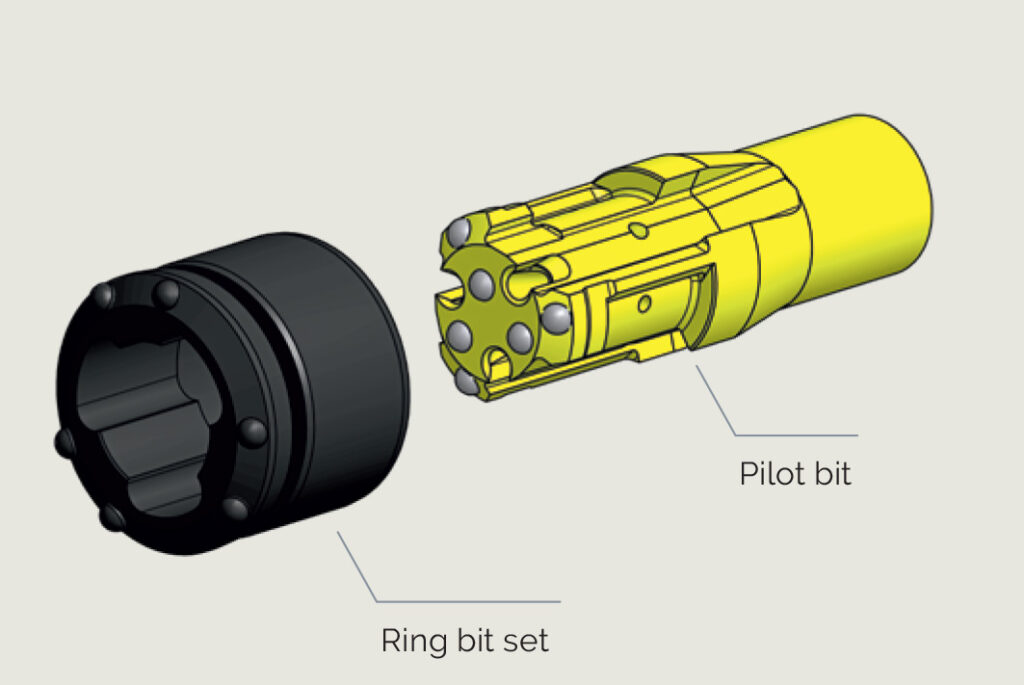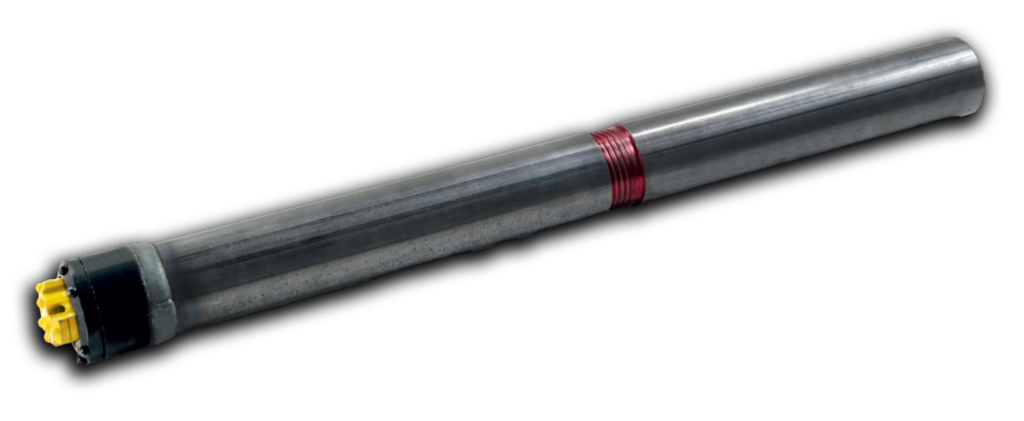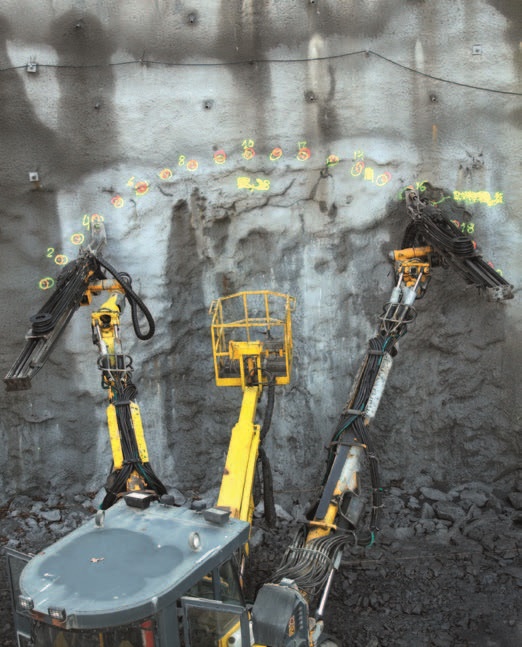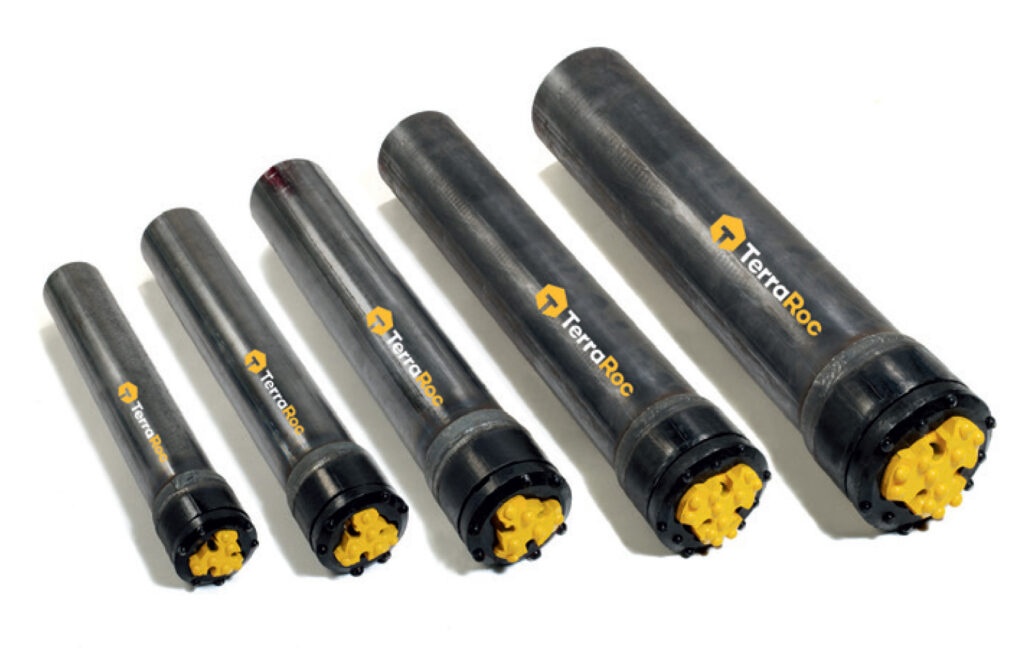The Symmetrix system components
– A pilot bit drills the center part of the hole and transfers the impact energy to the ring bit.
– A ring bit set, which is an integrated ring bit and casing shoe, welded to the front of first pipe, known as the starter pipe. The ring bit, which is connected to the pilot bit through locking mechanism, drills the void needed to advance the pipe into the ground simultaneous to drilling.




